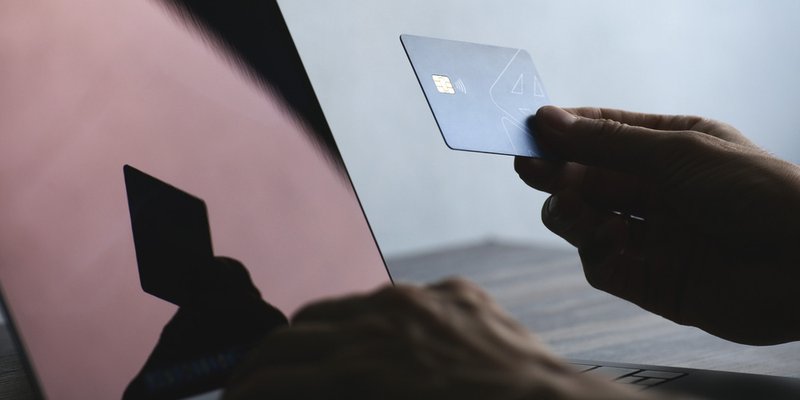
If you are not redirected within 30 seconds, please click here to continue.
Samedi: 10h – 16h HAE

If you are not redirected within 30 seconds, please click here to continue.
If you are not redirected within 30 seconds, please click here to continue.
How to Spot Credit Card Fraud and What You Can Do to Prevent It

Credit card fraud comes in various forms and can cause a lot of damage to both your balance and your credit score. Often thieves only get away with a few hundred dollars, but sometimes they can manage to steal thousands. When they do, it can take hours of hard work and communication to unravel the mess that they leave in their wake. In the case of identity theft, the recovery process can take months, if not years.
Taking protective measures to safeguard your financial information can ensure your credit card details don’t fall into the wrong hands.
How credit card information gets stolen
There are many ways credit card fraud can occur. Here are some of the most common types of fraud:
Stealing your card
This method is probably the least complicated way for a thief to get your credit card. Pickpockets and purse-snatchers will use your card to go on a shopping spree and then sell the items. Sometimes they tap your card for several small things, or they may also figure out your personal identification number (PIN) to make larger purchases.
Payment terminal tampering
Some criminals may add a skimmer or download spyware to a store’s payment terminal. This technique allows them to steal your credit card information and create a counterfeit card.
Phishing
You may receive an email or text that appears to come from a legitimate source asking you to provide your credit card information. These are fake.
Hacking
Thieves can get your credit card or personal information by hacking into a company’s computer systems. Some of Canada’s largest companies are often targets. More than 5,000 people were affected following several cyberattacks on the Canada Revenue Agency last year.
Identity theft
Often identity theft goes hand in hand with hacking. Although in some instances, a criminal can find personal information by going through your garbage or mailbox.
If you don’t check your statements online regularly or have alerts set up on your phone each time you make a purchase, it may take a while before you notice any suspicious charges.
As a result of the COVID-19 pandemic, scammers are looking to take advantage of people’s generosity. They may contact you by asking for a charitable donation. Not only will the charity be fake, but they’ll also take your credit card and personal information.
How to keep your account safe and prevent fraud
No one likes to be the victim of a scam. Here are some steps you can take to avoid credit card fraud and keep your personal information private:
Don’t reveal your PIN
You should be the only person who knows your PIN. Avoid sharing it with family and friends. Definitely do not write it down and store it close to your card in a purse or wallet.
You should also have a different PIN for every debit and credit card you carry. While it may be harder to remember multiple PINs, it will be more difficult for a thief to commit additional fraud if they manage to steal your purse or wallet. Also, you should be changing your PIN frequently, just like you should be changing your online account passwords regularly.
Set a tap limit
Although some credit card companies have raised the tap limit to $250 from $100 during the pandemic, having a high limit will make it easier for a criminal to make larger purchases without requiring a PIN.
Check your credit report regularly
You should check your credit report at least once a year to make sure everything’s correct. But you should also review it in case someone steals your identity and opens up new accounts on your behalf without your knowledge.
In Canada, you’re allowed to check your credit report at least once a year for free from each of the notable credit bureaus (either TransUnion or Equifax). Staggering your requests six months apart will allow you to get your credit report twice a year without having to pay anything.
Report any suspicious activity
If there are any irregular items on your credit report, make sure you contact both credit bureaus.
If there are any charges you don’t recognize on your credit card statement, contact the financial institution that issued the card immediately to get a replacement and report the fraud.
What to do at home
There are many ways to protect yourself from fraud, including locking your mailbox to prevent the theft of cards or statements, cutting up or shredding old cards and bills, and signing the back of your card as soon as you can.
What to do on the phone
Your credit card issuer won’t ask for personal information if they call you. If you don’t believe the call is legitimate, hang up and call the number on the back of the card. Also, you should avoid giving out your credit card details over the phone in public or if you think someone can hear you.
What to do online
When you shop online, make sure that the website is safe by checking that ‘HTTPS’ (Hypertext Transfer Protocol Secure) is in the URL or a padlock image in the address bar. Also, don’t send your credit card information through email and avoid online shopping or banking on a public Wi-Fi network.
Avoid saving your credit card number online and, instead, manually type in your payment details each time you make a purchase. That way, if one of your favourite brands is compromised, your customer information won’t be among the data stolen by hackers.
Turn off your location services or geotagging on social media. Personal details, like your address and when you are away on vacation, can assist criminals in exploiting publicly available information. This technique is known as cybercasing.
Anti-fraud features issuers provide
A lot of credit card issuers offer anti-fraud features to protect their customers. For example, the three major credit card companies in Canada — Visa, Mastercard, and American Express — have zero liability policies for unauthorized transactions.
Many financial institutions will also text or email fraud alerts if they detect suspicious charges on your credit card. Most banks will also allow you to lock your card through an app if it is misplaced or lost.
Better safe than sorry
Being a victim of credit card fraud can be a hassle and cause a lot of grief. But being more careful, knowing how to prevent fraud, and using the text alerts or safety features provided by your credit card issuer can reduce your risk of falling victim.
Get money-saving tips in your inbox.
Stay on top of personal finance tips from our money experts!










